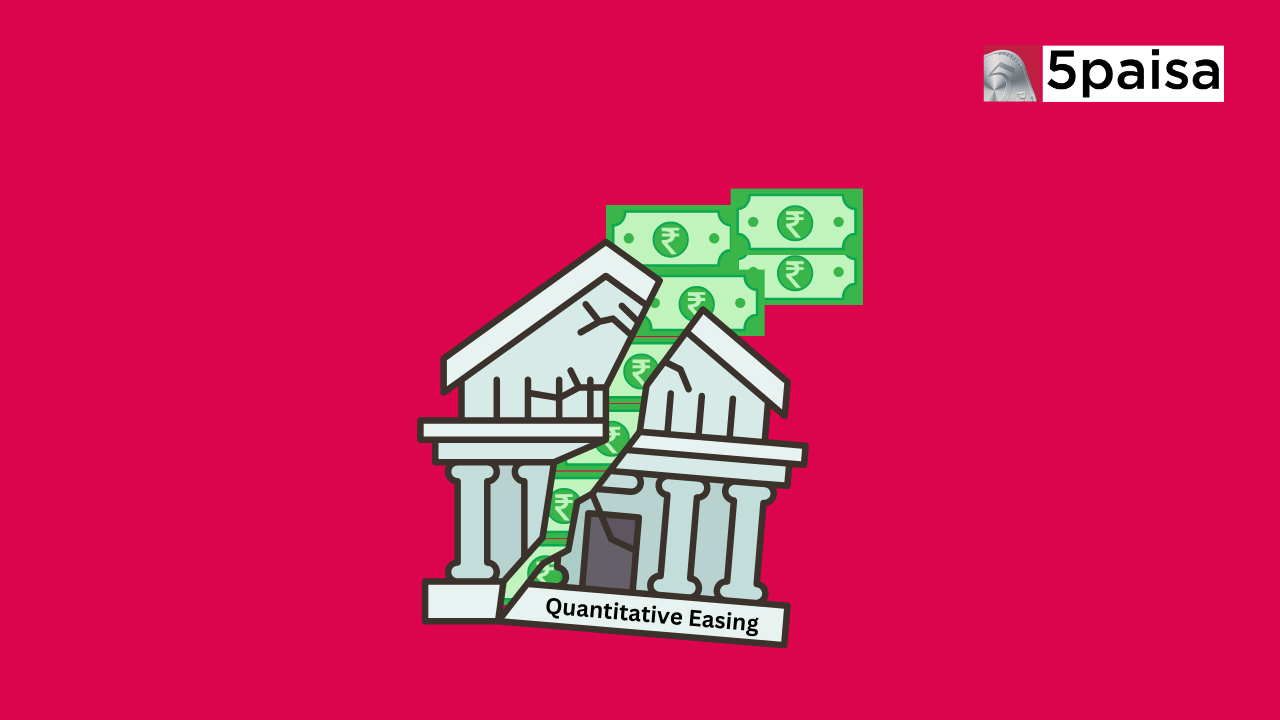The World of Quantitative Easing

Quantitative Easing (QE) is a significant & unconventional monetary policy tool employed by central banks to stimulate following:
- Economic Growth,
- Maintain Stability,
- Address crises.
In this blog, we will explore what quantitative easing is, why it is used, its historical applications, & the outcomes of its implementation. We will also delve into the potential disadvantages of this monetary policy. Let’s start with the basics!
What is Quantitative Easing?
Quantitative Easing is a strategy employed by central banks to inject money into the economy. Unlike traditional monetary policies, which mainly involve adjusting short-term interest rates, QE involves central banks purchasing long-term financial assets, typically government bonds or other securities.
Ramification of which is new money gets created & the money supply increases, aimed at lowering long-term interest rates & stimulating economic activity.
Why is it Used?
Quantitative Easing is used when conventional monetary policies, such as lowering interest rates, become ineffective. It serves several key purposes:
- Economic Stimulus: Central banks use QE to encourage borrowing, spending, & investing, thereby boosting economic growth.
- Fighting Deflation: When an economy is at risk of deflation (falling prices), QE can help prevent or mitigate this threat by increasing money supply & encouraging spending.
- Market Liquidity: During financial crises, QE provides liquidity to markets & stabilizes asset prices.
When Has QE Been Used?
Quantitative Easing has been employed in several major economies during times of economic crisis:
- United States: The U.S. Federal Reserve initiated QE during the 2008 financial crisis & later employed it in response to the COVID-19 pandemic.
- Eurozone: The European Central Bank (ECB) launched QE in response to the Eurozone debt crisis, & it was reactivated in 2015 & 2019.
- Japan: The Bank of Japan implemented QE in the early 2000s & continued to use it to combat persistent deflation.
Outcomes of Quantitative Easing
The outcomes of QE can vary, but they often include:
- Lower Interest Rates: QE effectively reduces long-term interest rates, making borrowing cheaper & spurring investment.
- Stimulated Economic Growth: By encouraging borrowing & spending, QE can help boost economic growth during times of recession.
- Increased Asset Prices: QE often leads to higher prices for assets like stocks & real estate, benefiting investors but potentially exacerbating wealth inequality.
- Inflation: Central banks aim for a modest level of inflation, & QE can help prevent deflation, ensuring price stability.
Disadvantages of Quantitative Easing
While QE has its advantages, it is not without drawbacks:
- Asset Bubbles: One criticism is that QE can inflate asset prices to unsustainable levels, potentially leading to bubbles that burst.
- Wealth Inequality: QE tends to benefit asset owners more than those without significant investments, increasing wealth inequality.
- Limited Effectiveness: The impact of QE can diminish over time, especially if interest rates are already very low.
- Potential Inflation Risk: Although central banks aim to maintain price stability, excessive QE can lead to higher inflation if not managed carefully.
Conclusion
In conclusion, Quantitative Easing is a powerful tool that central banks use to navigate complex economic landscapes. By injecting money into the economy & lowering long-term interest rates, it can stimulate growth & combat deflation.
However, it comes with potential drawbacks, including asset bubbles, wealth inequality, & risks of inflation. Understanding the delicate balance of using QE is crucial for central banks, as they seek to maintain economic stability & promote growth in an ever-changing financial world.
- Flat ₹20 Brokerage
- Next-gen Trading
- Advance Charting
- Actionable Ideas
Trending on 5paisa
Disclaimer: Investment in securities market are subject to market risks, read all the related documents carefully before investing. For detailed disclaimer please Click here.

 5paisa Research Team
5paisa Research Team
 Sachin Gupta
Sachin Gupta